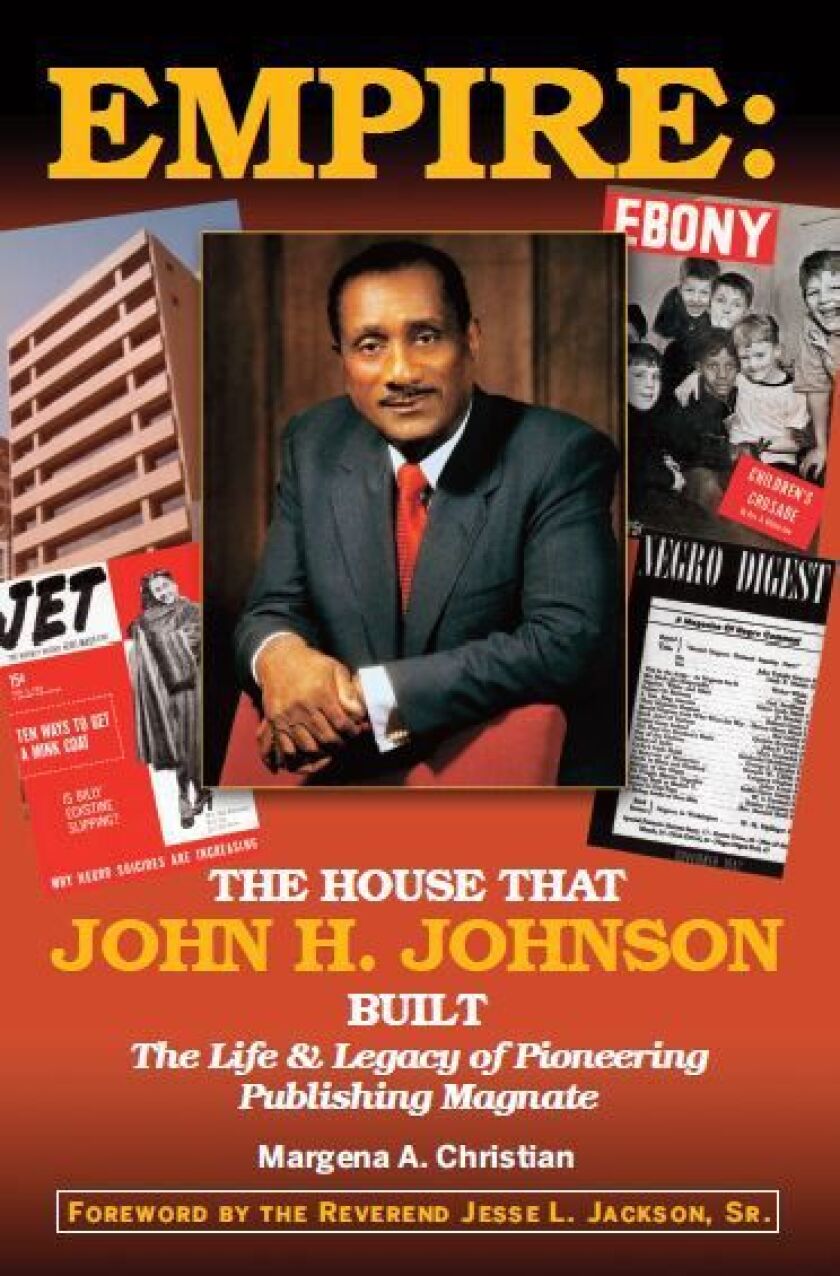This summer, when former staffers of the Johnson Publishing Co. gather here from across the nation for their annual Johnson Publishing Co. Reunion, it might feel like their very first gathering.
That first one was in 2009, after half the staff was let go amidst JPC’s financial woes. Those who lost their jobs sought to maintain bonds formed over decades at a company where the founder’s policy was to never force people to retire.
The reunion’s 10th year milestone coincides with final dismantling of “EMPIRE: The House That John H. Johnson Built,” as described by University of Illinois at Chicago lecturer and nearly 20-year JPC staffer Margena A. Christian, author of the 237-page tell-all.
“This is a sad time for the life and the legacy of what John H. Johnson founded as a means to educate, uplift and inspire his people,” said 51-year-old Christian, whose timely book came out in November.
“The first reunion … was born out of sadness, but also born of purpose. We knew the history we made, the history we were part of, and were determined not to let that go,” said Christian, hired by Johnson himself in the fall of 1995, as an assistant editor at Jet.
Last week, the iconic black publishing firm filed for bankruptcy to begin liquidation of assets — the historic archives JPC once offered for sale at $40 million, and what’s left of the Fashion Fair Cosmetics division founded by Johnson’s wife, the late Eunice Johnson.
The company had been operated by their only surviving child and heir, Linda Johnson Rice. Johnson Rice’s only child, Alexa Rice, chose not to enter the family business.
RELATED: Heartbroken over John H. Johnson’s legacy
“Johnson Publishing began having financial troubles as early as May 2009, several years after the death of John H. Johnson, when JPC had complications paying its printing bill to R.R. Donnelley & Sons Co.,” recalled Christian, whose book lays out the slow spiral downward of the company after its founder’s death.
R.R. Donnelley ended up taking out mortgages for about $12 million on Johnson-owned properties — including the 11-story JPC headquarters at 820 S. Michigan Ave., the first and only downtown Chicago high-rise designed by a black architect: John Warren Moutoussamy.
The company moved into the building in 1972. But as Christian’s book chronicles, it was the first JPC asset scissored off, sold for $8 million to Columbia College for campus expansion November 2010. Columbia never moved in, selling it for $10 million November 2017 to 3L Real Estate, which is now converting it into luxury apartments.
The one-time flagship Ebony and Jet magazines that launched an empire were sold June 2016 to a black-owned equity firm, Clear View Group of Austin, Texas, now published under the firm’s EBONY Media Operations in California.
“I was the last man standing, the bridge between the old and the new. I saw everything that happened from after his death, and every time we thought it was bad and couldn’t get any worse, it did,” said Christian, who was the last editorial employee to have worked directly under John H. Johnson when laid off May 2014.
Johnson died Aug. 8, 2005, at age 87. Christian, of Bronzeville, was among 46 staffers hand-picked to stand honor guard for the body in the lobby of JPC — in 15-minute shifts — while a line of people snaked down South Michigan Avenue to pay their respects Aug. 14, 2005.
After his funeral the following day, the staff of Jet, which had met with the icon every single day — as opposed to Ebony, where Johnson met with Editor Lerone Bennett, Jr. — returned to put out a tribute issue. “It was one of the most difficult things we’d ever done, because this was the first issue he didn’t sign off on. Jet was Mr. Johnson’s baby,” Christian said of the diminutive weekly that actor Redd Foxx christened “the Negro bible.”
It was watching the demise of the company Johnson had built from a $500 loan from his mother, that led Christian, who left the company as an Ebony senior editor, to write first her 2013 dissertation on JPC, then the book.
“I wanted to show the full composite of who he was. I wanted to have him recognized as a scholar, because he used his magazines to educate — as textbooks, if you will,” she said.
“He was a tough boss, who demanded excellence in every way. He was firm, but fair, and considered his employees to be family. He’d crack jokes throughout at meetings, and had a laugh like a whistle. And whether you were the janitor or top editor, he knew everyone’s name.
“But Mr. Johnson didn’t take any s—. He cursed like a sailor, and if he was upset about something, he’d slam his fist on the table. I saw grown men stumble over their words in front of him. He was the only man who could put [the Rev.] Jesse Jackson at a loss for words,” Christian continued.
There are great stories from the company’s heyday. The famous came from all over the world to dine in JPC’s 10th-floor dining room. Its seventh-floor library housed an unrivaled collection of black literature, first edition signed works by the likes of Langston Hughes and Richard Wright. The third-floor — all pink — housed Fashion Fair’s traveling fashion show and cosmetics, always teeming with beautiful women. And the first-floor photo studio hosted the most famous of celebrities, like the time the entire Jackson 5 family came in for that iconic Ebony photo.
Christian also worked closely with Mrs. Johnson in the fashion and cosmetics division, right up until she died Jan. 3, 2010, at age 93, and wrote the company’s history of Ebony Fashion Fair, the traveling fashion show founded in 1958.
“Fashion Fair Cosmetics came around in 1973, during a time when black women had to pretty much mix and match various shades from white cosmetic companies to get the look they wanted. Fashion Fair was revolutionary in that it changed the game,” said Christian.
“Queen of Soul Aretha Franklin was the first celebrity spokesmodel for the cosmetic line and wore it until her final days. At one point, Prince even used the foundation. It’s unfortunate that the company let its white competitors corner a market they were instrumental in introducing.”
The archive collection contains decades of historic images, with images such as the one of Coretta Scott King at Martin Luther King, Jr.’s April 9, 1968 funeral, holding their daughter Bernice. JPC’s Moneta Sleet Jr. became the first black photographer to win a Pulitzer for that photo. Placed for sale in 2015 by former JPC Chief Operating Officer Desiree Rogers, the asking price drew no takers.
Christian has been commissioned by Oxford University Press to write separate biographies for both the JPC founder and his wife for the upcoming 2019 American National Biography research database.
She hasn’t yet heard back from Johnson Rice about the book.
“I spoke to Linda when I was about to release it. She asked me to send her a copy. I told her former JPC colleagues did editing and the cover design. She told me she knew it was in good hands and was looking forward to reading it. I haven’t spoken to her since she received it,” said Christian.
“John H. Johnson was more than just a boss. He was a mentor. This final chapter in its history is like the death of a family member. It’s sad on the 10th anniversary of our reunion for this to be truly the end.”








